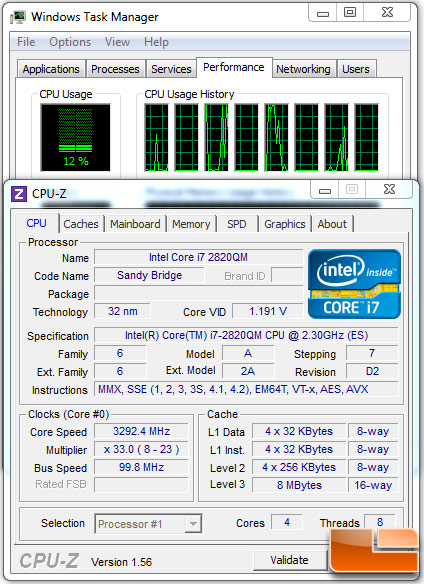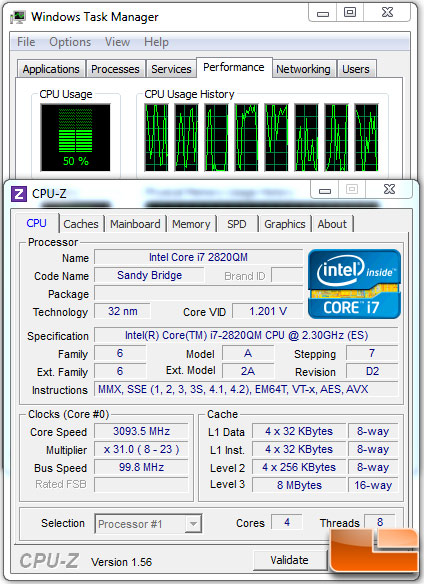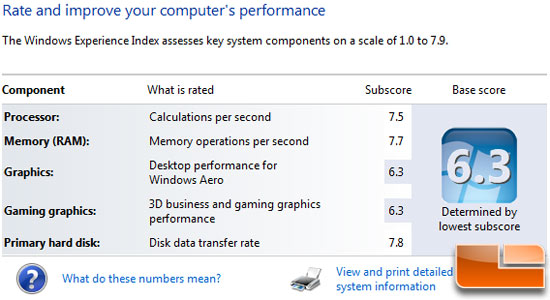Intel Core i7-2820QM – Sandy Bridge For Notebook PCs
Turbo Mode w/ CPU-Z & Windows Index Score
CPU-Z 1.56 shows that the Intel Core i7 2820QM Sandy Bridge processor has 256K L2 cache per core and 8MB shared L3 cache. It also shows that the processor has the AES-NI and AVX instruction set.

The Intel Core i7 2820QM processor has a 23x multiplier with a 100MHz reference clock, but features low power states and turbo mode. This means than the core clock frequency and base clock will raise up and down so much depending on the workload all by itself. Sandy Bridge is said to be the most dynamic processor to date for Intel and this is the key to its low power consumption at idle. The screen shot above shows the Core i7 2820QM at a complete idle state. You can see the multiplier dropped down to 8x and the core speed or overall clock frequency is just 800MHz.

With the processor under a light workload (1 thread) the multiplier has the ability to jump all the way up to 34x and that is enough for the processor to reach 3.4GHz. We weren’t able to get a screen capture of this as every time we ran 1-3 threads at load we got 3.3GHz with a 33x multiplier. This is an amazing frequency to hit for this 45W TDP processor and should be enough horse power for this processor to tear it up in the benchmarks. It also has Hyper Threading, so between Hyper Threading and Turbo Mode it should perform really well.

With the processor under 4+ thread heavy workload the multiplier jumps up to 31x and that means the processor is running at 3.1GHz.

The Windows 7 Experience Index scored the system at a base score of 6.3, with the Intel HD Graphics being the weakest point in the system as shown above. Microsoft Windows 7 is rated on a scale from 1.0 up to 7.9, so this is a very solid score. Intel’s integrated graphics now appear to be on par with competitive IGP solutions from NVIDIA and AMD and even some of their lower end entry level video cards!

Comments are closed.